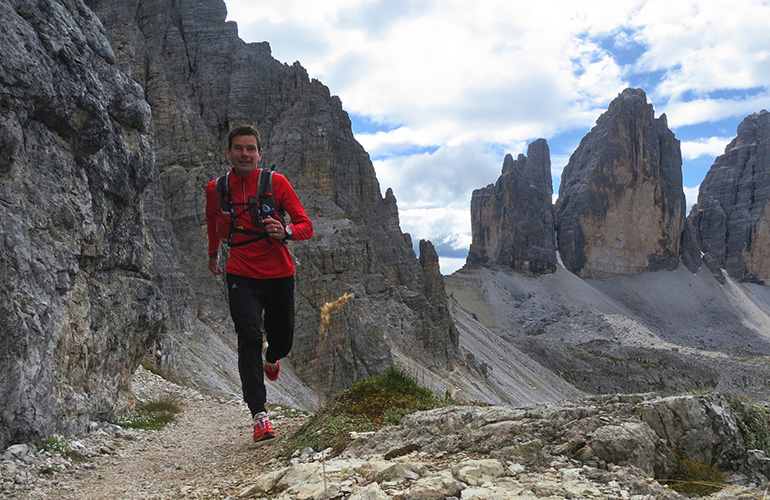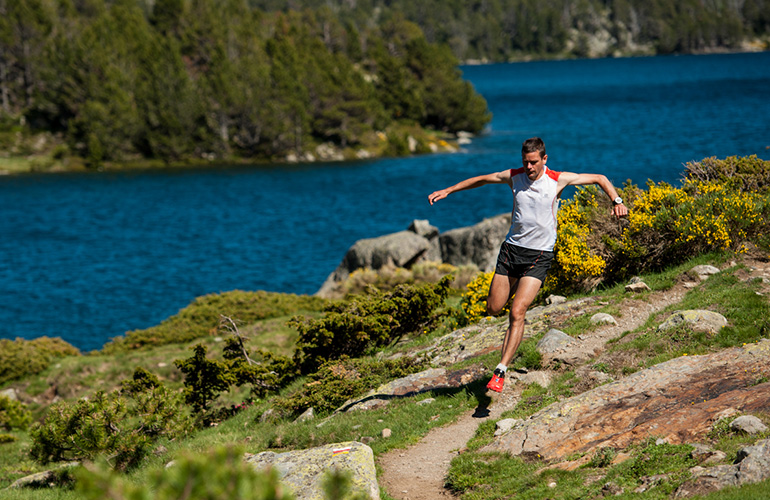Jonathan Wyatt needs no introduction in mountain running circles. He's the eight time winner of the world mountain running grand prix series. Below, he offers seven tips to help road runners transition to trail.
Running on changing, uneven terrain develops muscles that road running doesn’t really reach. The body responds to the terrain by using stabilizing muscles, balance and core. But transitioning from road to trail requires care. These seven tips will help you make the change.
1. Start progressively
Following Killian Jornet up the Matterhorn might look like fun, but you’ll enjoy it more when you move up the technical scale over time, adding more technical and longer runs as your confidence and trail fitness increase. If a normal run for you is one hour on city streets then start by running 30 minutes road and 30 minutes trail to make a gradual transition.

Start on easier trails before hitting the mountains, Wyatt says. ©Jonathan Wyatt
2. Shorter stride
A soft and slippery trail will give a greater workout sometimes resulting in fatigue or strain in the hamstring area. Don’t fight against a slippery uphill or downhill, instead reduce your stride length and increase your leg speed (turnover) so you’re putting less power down through your feet on each step. This reduces slipping. Running on sand is a good way to train this.
3. Scan ahead
Read the trail ahead and don’t just react to what’s immediately below you. With road running you can look at your feet, but not so out on the trails. You want to scan ahead rather than looking down at where your feet are going to land. By instead reading the terrain ahead, your feet will follow where your eyes are leading.
4. Learn to play the trail
Look for good lines to find the most efficient part of the trail and use banking on corners for smooth, fast entry and exit speeds – especially downhill. Learn to play on the trail where you can use terrain features to slingshot out of corners, accelerate from downhill into ascents and, most importantly, to have fun!

Trail running reduces overuse injuries common with roadrunners. ©Droz Photo
5. Care for your ankles
Roadrunners often twist an ankle when they take on more technical running terrain. To improve ankle proprioception – eye-foot coordination – trying using a wobble board or practice standing on one foot, making sure the knee is centered over your second toe as you look down. Tendons and foot muscles can take a pounding if you’re not used to uneven terrain and these exercises strengthen them. Close your eyes and do slow knee bends to spice it up too.
6. Find local trails for your level
Finding the best trails is not always easy so if you’re new to off-road running, talk to trail runners, go online or find popular routes in your area on Suunto App's heat maps to find suitable running trails. Remember safety is first, so you’ll need more equipment, preparation and common sense when running in the great outdoors.

Jono Wyatt is an eight time winner of the world mountain running grand prix series. ©zooom.at/Markus Berger
7. Remember, hills are your friends
The changing terrain will help you avoid overuse injuries that can occur when running on repetitive flat surfaces. Add more hills as you grow stronger off road. Remember too, the softer ground and grass on many trails also help to reduce the impact of downhill running on joints and muscles.